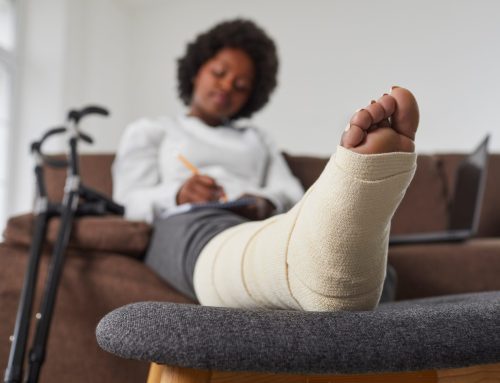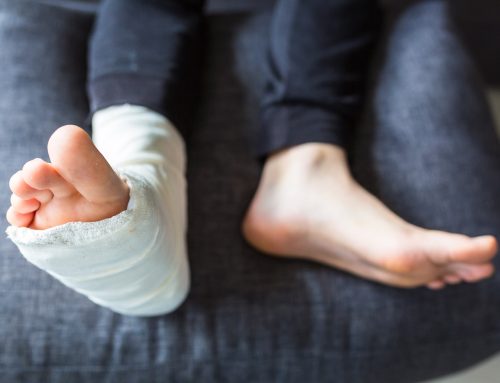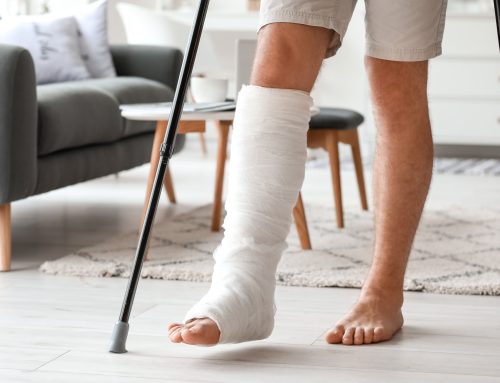Have you ever heard a kid say, “When I grow up, I want to break a bone”? This isn’t something people expect and usually do their best to avoid. However, most people you meet will happen to have a broken bone story. Whether it’s as simple as your pinkie toe or as complex as a femur fracture, when it happens, the path to recovery can feel never-ending and cause disruptions in your everyday life. A significant milestone in this journey is removing the cast – a symbol of both challenge and resilience. This moment, however, is not the end but a pivotal point towards full recovery. Understanding the dos and don’ts after cast removal is crucial for a smooth transition back to normalcy.

The Healing Process: What Happens Under the Cast?
When a bone breaks, the body starts a three-phase healing process: inflammation, production, and remodelling. The cast provides the necessary support to align the bone during this period properly.
Phase 1: Inflammation
Immediately following a fracture, the body initiates an inflammatory response to protect the area and start healing. This phase begins within minutes of the injury and lasts several days. The primary goal of inflammation is to remove damaged cells, bacteria, and any other debris from the fracture site. Blood vessels in the area expand to allow more blood flow, which can cause swelling and warmth. This increase in blood flow also brings essential nutrients and immune cells to the site, laying the groundwork for healing.
Phase 2: Bone Production
Following the initial cleanup, the body shifts its focus to repairing the break. This phase is characterized by forming a soft callus around the fracture site, which occurs approximately one week after the injury and can last up to several weeks. The soft callus comprises collagen and cartilage, providing a temporary framework for forming new bone.
Osteoblasts begin to deposit new bone material, transforming the soft callus into a hard callus. This new bone is not as strong as the original bone structure but serves as a bridge, connecting broken bone pieces and providing stability. During this stage, the cast plays a vital role in maintaining proper alignment and immobilization of the bone, ensuring that the hard callus forms correctly and efficiently.
Phase 3: Bone Remodelling
The final phase of bone healing involves remodelling the newly formed bone into its original shape and strength. This process can take several months to years, depending on the severity of the fracture and the individual's overall health.
Remodeling also involves adapting the bone to the mechanical stresses placed upon it. Through a process known as Wolff's Law, bone density increases in areas subjected to frequent stress, making the bone stronger and more resilient over time. This phase underscores the importance of gradually reintroducing physical activity and weight-bearing exercises after cast removal, as they stimulate bone remodelling and strength.
Dos and Donts After Cast Removal
Upon cast removal, it's common to see some swelling, stiffness, and even muscle atrophy. These are normal reactions as your limb adjusts to newfound freedom. There are some fundamental dos and don'ts you should know about before jumping back into regular activities that you enjoyed pre-fracture.
Do: Introduce Gradual Movement
Start with gentle exercises to improve your range of motion. Physical therapy may be recommended to strengthen muscles and support the healing bone.
Do: Pay Attention to Skin Care
Your skin will likely be dry and sensitive. Moisturizing with a gentle, fragrance-free lotion can help. Avoid scrubbing the area to reduce irritation.
Do: Monitor for Swelling
Mild swelling is typical. Elevate the limb and apply ice if necessary. However, if swelling persists or worsens, consult your healthcare provider.
Don’t: Take On Stressful Tasks or Activities
Resist the temptation to jump back into regular activities. Putting too much stress on the healing bone can lead to complications.
Don’t: Skip The Moisturizer
Ignoring skin care can lead to discomfort and potential skin issues. Gentle care is essential for recovery. This means you should be sure to give your skin some lotion daily, especially in the months following cast removal.
Don’t: Disregard Professional Advice
Skipping physical therapy sessions or not adhering to recommended exercises can delay recovery. Follow the guidance of healthcare professionals.
While following the dos and don'ts after cast removal is vital, there's growing interest in methods to accelerate healing and rehabilitation. One innovative technology that has gained attention is Low-Intensity Pulsed Ultrasound (LIPUS).
Introducing LIPUS Technology
LIPUS is a non-invasive ultrasound technology that stimulates the bone's healing process. It sends a mechanical force through the tissue, activating cell reproduction and enhancing cellular behaviour at the fracture site. This method has accelerated the healing of fresh, delayed, and non-union fractures.
The Melmak LIPUS Device: A Game-Changer in Bone Healing
The Melmak device utilizes LIPUS technology to offer a convenient, 20-minute daily treatment that can significantly advance the healing process. Designed for self-treatment, it allows for the healing of fractures in the comfort of your home or office without needing medical supervision.
Recovering from a fracture is a journey that requires patience, care, and the right tools. Following the dos and don'ts after cast removal will help you take steps toward regaining your strength and mobility. Incorporating advanced healing technologies like the Melmak LIPUS device can further support your recovery, offering a faster return to daily activities and a smoother transition back to normalcy.
Ultimately, whether through diligent post-cast care or the support of innovative healing solutions, the goal remains the same: to ensure a successful recovery and a swift return to the life you love. With the right approach and resources, overcoming a fracture can become not just a memory of a challenge faced but a testament to the resilience and strength within. Contact Fracture Healing to learn more about the device that can help you experience the relief of faster fracture healing.





